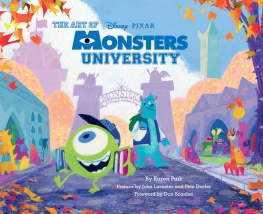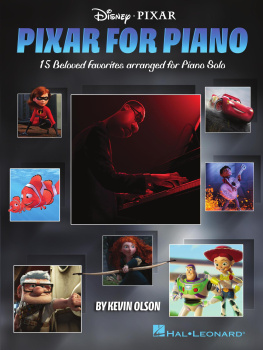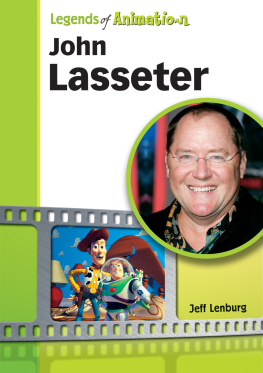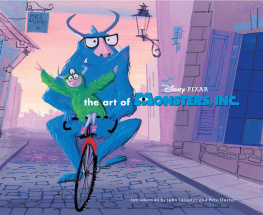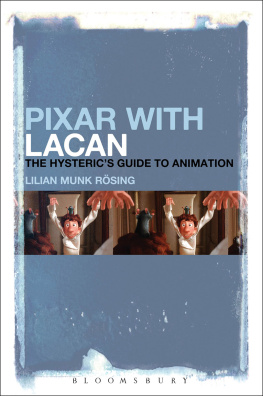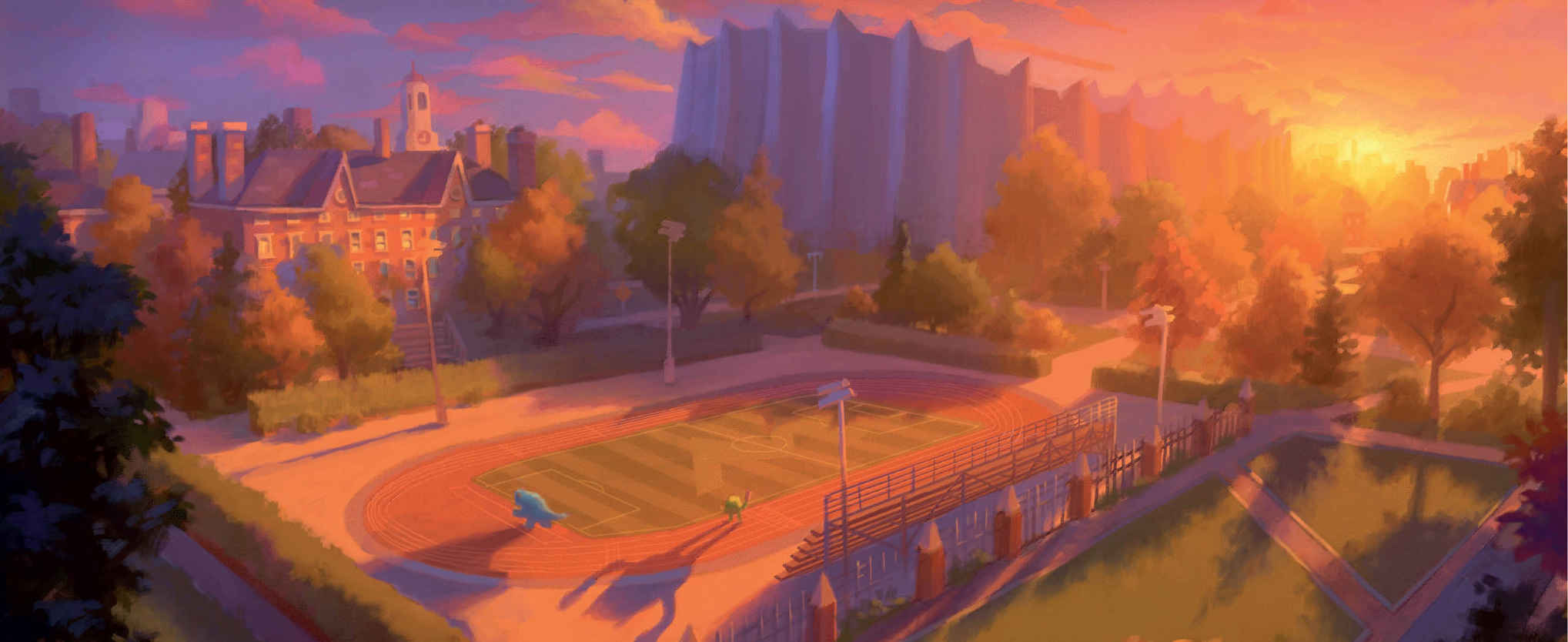
Shelly Wan | digital | 2010
Text copyright 2013 by Disney Enterprises, Inc./Pixar.
All rights reserved. No part of this book may be reproduced in any form without written permission from the publisher.
ISBN 978-1-4521-1207-7 (hc)
ISBN 978-1-4521-4750-5 (epub2, mobi)
Designed by Glen Nakasako, SMOG Design, Inc.
Chronicle Books LLC
680 Second Street
San Francisco, California 94107
www.chroniclebooks.com
:Ricky Nierva, Dice Tsutsumi | gouache, digital | 2012
Photograph of John Lasseter on Courtesy of the California Institute of the Arts Archive.
California Institute of the Arts Library, California Institute of the Arts, Valencia, California.
Credit: California Institute of the Arts Photographic Materials Collection.
CONTENTS
PREFACE
M aking a sequel is a huge challenge. You want to create a story thats true to the original characters and film but at the same time take the audience somewhere new and different. Making a prequel proved even trickier. After all, anyone whos seen the original film already knows how this one is going to end! Luckily, the Monsters University team studied hard, did their homework, and passed this test with flying colors.
If Monsters, Inc. was about what happens when a new and strange door opens, Monsters University is about what happens when the door youve been headed toward unexpectedly slams shut. Its a question every one of us has had to deal with at one time or another: What do you do when your dreams run into the roadblocks of real life?
Director Dan Scanlon embraced this concept and made it his own, all the while remaining true to the Monsters, Inc. characters and world. Dans irreverent sense of humor was just the right match for Mike and Sulley, and clicked perfectly with the college setting.
Production designer Ricky Nierva and his frighteningly talented team of artists have created a world for this film that is simultaneously eye-opening and familiar. Theyve managed to seamlessly merge the monster aesthetic of the first filmthe buildings and spaces that accommodate characters of all shapes and sizes, and the monster-y decorative detailswith the dignified architecture and raucous crowds of the archetypal collegiate environment.
It was remarkable to watch entirely new aspects of characters and places we knew so well reveal themselves in the hands of these talented filmmakers. In this book youll see the evolution of their ideasand some of the most gorgeous art weve ever seen at the studio.
Join us as we walk out the door of the Monsters Inc. scare factory and down the streets of Monstropolis.
John Lasseter and Pete Docter
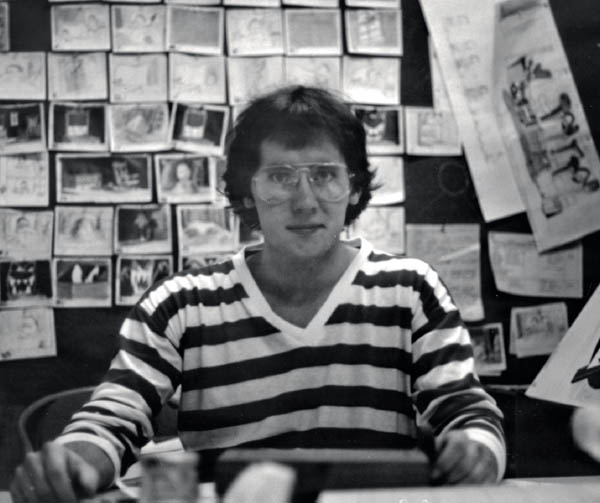
College-age John Lasseter | 1979
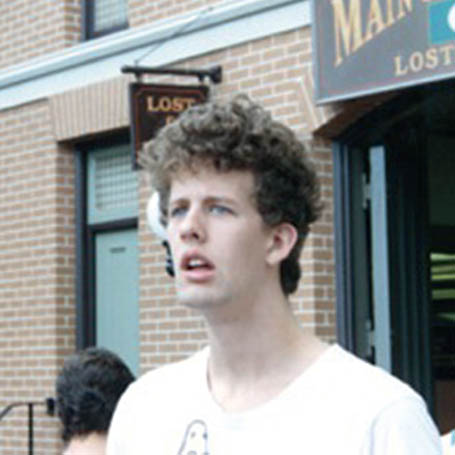
College-age Pete Docter | 1989
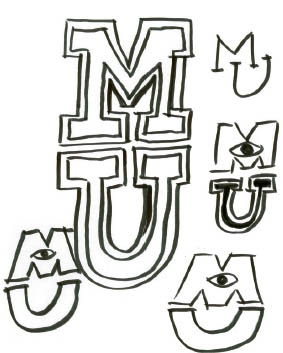
John Lasseter | marker | 2009
FOREWORD
O ur films can take anywhere from four to five years to create. So we often say that, between the time spent and lessons learned, each film is like getting a college degree. They are long journeys of success and failure that can oftentimes lead to life-changing self-discovery. Thats why when we decided to tell the story of how Mike and Sulley met, and how they became the characters that audiences fell in love with in Monsters, Inc., college seemed like the perfect setting.
To me this movie is for anyone who has dealt with failure. We all come face-to-face with it at some point in our lives. I love asking friends and fellow Pixar employees how they ended up in their chosen field. More often than not, the story starts with a very different dream. How did I become an animator? Well it all started in law school... I think its these missteps and misdirections that make us stronger and make our lifes story more interesting. I love movies that inspire us to believe that if we try hard enough, we can be anything we want. The truth is, sometimes as hard as we try, as much as we believe, things just dont work out; it happens to all of us. But in hindsight these failures often turn out to be nothing more than detours leading to wonderful discoveries of a life, a career, a love we never would have thought possible.
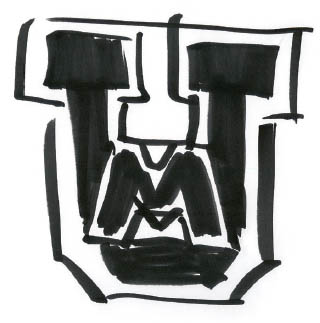
John Lasseter | marker | 2009
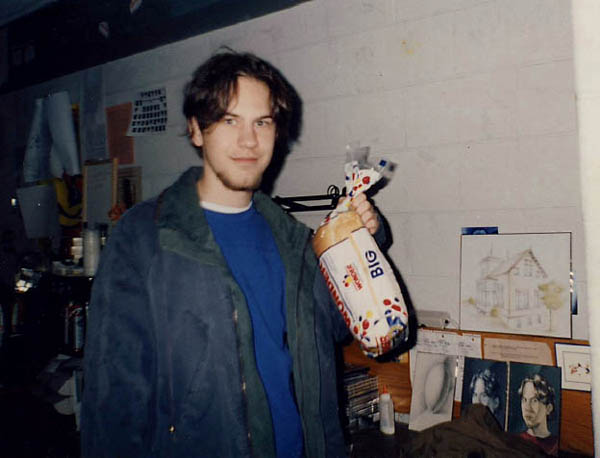
College-age Dan Scanlon | 1995
Developing a story is all about failing over and over again. Every Pixar movie goes through this struggle. When our films story was struggling, it was the regular escapes to the art department that kept me going. There Ricky Nierva and his team would show me the beautiful art that suggested what the movie could one day become. Id see paintings that promised great dramatic and emotional possibilities, as well as hilarious character designs, epic sets, and lighting so vivid that even from inside a dark screening room you could smell the grass and feel the breeze on campus. The early animation I reviewed breathed life into characters that we were still just forming on the page. It was these meetings that sent me back to the diligent story-and-editorial team with newfound inspiration for what this fledgling film would one day grow to be.
Im proud to work with a studio full of these failuresfailed musicians, failed doctors, failed athleteseach one of us now living a life far different and more wonderful than the one we imagined. We fail together every day, and it only makes us, and our films, stronger.
So please enjoy the work of Pixars graduating class of 2013.
Dan Scanlon
INTRODUCTION

Dice Tsutsumi (painting), Matt Aspbury (pre-visualization) | digital | 2010
W hen the idea of a sequel to Monsters, Inc. was first discussed, there was only one thing that was off the table for Pete Docter, the director of the original film: It was going to be impossible to bring Boo back. Docter knew that people would want to see the little girl againeven during the making of the first movie, people had wanted to see her in the final scene, not just hear her voicebut he felt strongly that the characters story had ended in the right place.
Instead, it was decided that the new

